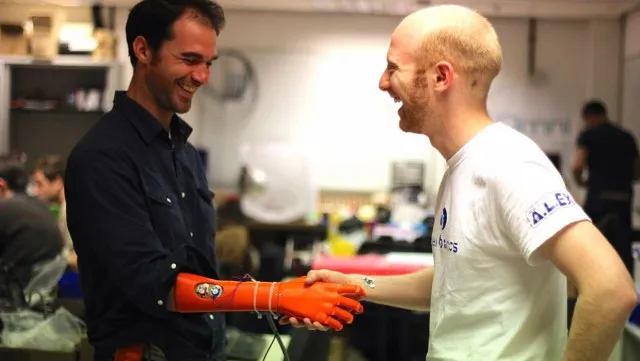3D printed bionic hand wins Dyson Award

This is especially the case for children, who often need a new hand every year as they grow. Not having use of one extremity is exceptionally restrictive, so Open Bionics set out to find a way to make a bionic hand quickly and cheaply.
And it seems the company succeeded. In fact, its prototype works so well that it is the U.K. winner of the Dyson Award . Open Bionics CEO, Joel Gibbard, claims that it takes two days to scan, print and assemble a custom-fitted socket and hand. All for £2,000 ($3,000). Compare this to prosthetic arms with moveable fingers that start at £20,000 ($31,000) and can take weeks to make.
As the name suggests, Open Bionics is committed to being "open." All of the models for its prosthetic limbs will be open source, that is, available for everyone to use for free. The company only asks that any alterations made to the design are also made available for free. It will be exciting to see what creative minds will come up with once they get their hands on the design.
The device itself is modeled on the skeleton of a human hand. The central components make up the skeleton and it is covered with a rubbery, flexible plastic, which acts like skin. This design keeps the hand lightweight and robust.

The hand is powered by muscle movements in the wearer's arm, which are registered by electrodes stuck to their skin. Simple examples are the flexing of the inner arm, which closes the hand, and flexing the outer arm, which opens it.
Wearers are unable to sense objects gripped in the bionic hand, so instead the fingers are fitted with sensors that detect when the hand is approaching an object. This limits the strength of the grip, avoiding damage to the object or the hand itself.
The design does have some limitations, however. To achieve the more affordable price the team has used lower-cost motors, so the overall strength is lower. The team has been testing the strength on common household objects to ensure this compromise doesn't prevent users from carrying out everyday activities.
Tags:





